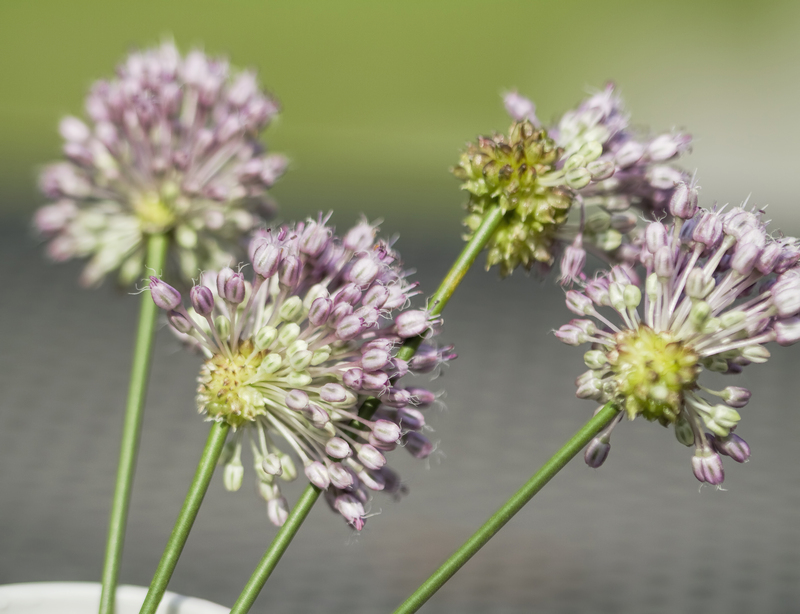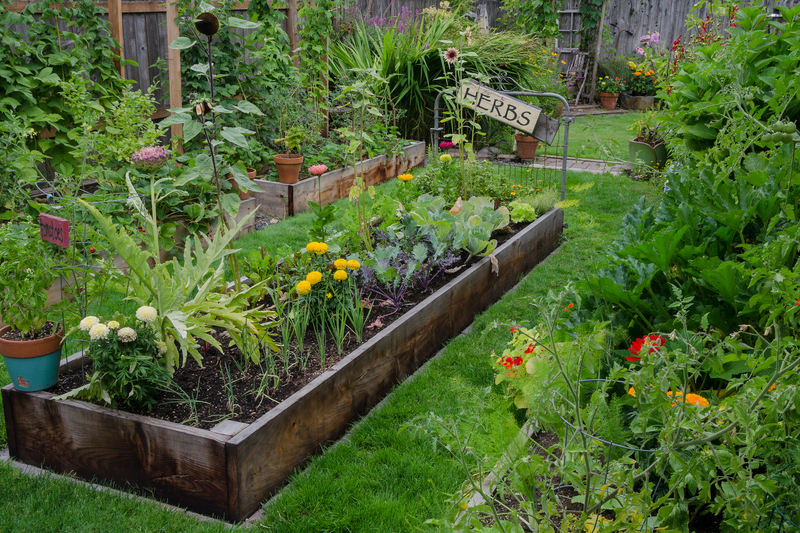How to Help Garden Plants Endure Cold Winter Temperatures
Posted on 17/06/2025
How to Help Garden Plants Endure Cold Winter Temperatures
Winter can be a challenging time for garden enthusiasts. Freezing temperatures, frost, ice, and snow can all adversely affect your precious plants. However, there are many strategies you can implement to help your garden plants survive and thrive through the cold winter months. In this comprehensive guide, we'll cover effective methods to prepare your garden for winter, protect your plants from harsh weather, and set them up for a flourishing spring revival.
Understanding Winter Plant Hardiness
Different plants possess varying degrees of tolerance to cold. Perennials, annuals, shrubs, and trees all have unique needs when it comes to surviving the winter. Before you start your winter garden preparations, it's important to:
- Identify the hardiness zone of your region using the USDA Plant Hardiness Zone Map.
- Learn the cold tolerance of each plant species in your garden.
- Recognize the difference between cold-hardy and tender plants to better allocate protection efforts.
Understanding these factors helps determine which steps you need to take to protect your garden plants from frigid winter temperatures.

When to Start Preparing Garden Plants for Winter
Timing is critical in preparing garden plants to survive cold weather. Begin your preparations before the first hard frost:
- In most regions, this means late fall or early winter (October-November).
- Monitor local weather forecasts for sudden drops in temperature.
- Prepare materials in advance: mulch, burlap, frost blankets, and other protective covers.
Best Practices to Help Plants Survive Winter
There are several time-tested strategies for helping plants endure freezing temperatures and making sure your garden prospers come spring. Let's explore the top methods:
1. Mulching for Winter Protection
Mulching is one of the most effective ways to protect your garden plants from cold winter conditions. Mulch acts as an insulating layer, preventing soil from freezing too rapidly and minimizing temperature fluctuations around plant roots.
How to mulch effectively:- Apply 2-4 inches of mulch (wood chips, straw, pine needles, leaf mold) around the base of your plants after the ground begins to cool but before it freezes solid.
- Avoid piling mulch directly against plant stems to discourage rot and rodent nesting.
- For tender plants, mound mulch over the crown for added protection.
Pro Tip: Organic mulches not only insulate but also improve soil as they decompose, benefiting plant growth in the following season.
2. Watering Plants Before the Freeze
Contrary to common belief, well-hydrated plants endure cold weather better than drought-stressed ones. Ensuring adequate soil moisture helps plants withstand the stress of freezing temperatures.
- Water deeply before the ground freezes, especially if rainfall has been scarce.
- Avoid waterlogging the soil, which can increase the risk of root rot.
Moist soil retains heat longer than dry soil, providing a buffer against sudden cold snaps.
3. Covering and Insulating Garden Plants
During periods of extreme cold, it's crucial to shelter vulnerable plants:
- Use frost blankets, burlap, or garden fabric to cover shrubs and perennials, securing covers with stakes or landscape pins.
- For small annuals or vegetable seedlings, use cloches or overturned buckets as mini greenhouses.
- Remove covers in the morning to prevent overheating and allow air circulation on milder days.
Wrapping plants can prevent frostburn, dieback, and wind damage, especially in exposed areas of your garden.
4. Protecting Container Plants in Winter
Container plants are particularly susceptible to freezing temperatures because their roots are less insulated:
- Move pots closer to walls or inside garages, greenhouses, or sheds to provide shelter.
- Group containers together to share warmth and wrap pots with bubble wrap or burlap for extra insulation.
- Elevate pots off the ground to avoid direct contact with frozen surfaces.
For large outdoor containers, mulch over the soil and insulate the pot exterior to prevent freeze-thaw cycles that can damage roots.
5. Pruning: What to Cut, What to Leave
Pruning at the wrong time can make plants more vulnerable to winter damage:
- Avoid heavy pruning in late fall: Cutting stimulates new growth that won't have time to harden before winter.
- Remove dead, diseased, or damaged branches to prevent snow load breakage.
- For some plants, like roses, late winter pruning is best after the worst of the cold has passed.
6. Planting Location and Windbreaks
Where you place your plants can have a huge impact on their survival:
- Position sensitive plants near south- or east-facing walls where they benefit from radiant heat.
- Use fences or hedges as windbreaks to reduce exposure to frigid gusts that can dry out and freeze plant tissues.
- Consider planting evergreens as living windbreaks for long-term protection.
Special Considerations: Evergreen and Woody Plants
Evergreen shrubs and trees face unique winter stresses:
- They continue to lose moisture through their leaves or needles, risking winter desiccation if the soil is frozen and roots cannot absorb water.
- Apply an anti-desiccant spray to foliage in late fall to help minimize water loss.
- Mulch generously and maintain watering until a hard freeze sets in.
For young trees and shrubs, protect trunks from cracking due to frost or sunscald by wrapping with tree guards or burlap.
How to Help Perennials Survive the Winter
Many perennial flowers and plants tolerate cold, but benefit from some extra help:
- Cut back perennial grasses and flower stems only after they've died back completely (usually after first frost).
- Mulch generously to insulate roots and crowns.
- Consider lifting and storing tender perennials like dahlias, cannas, and gladiolus in a cool, frost-free place indoors.
Some gardeners choose to leave dead foliage for additional insulation and as habitat for overwintering beneficial insects.
Protecting Annuals and Vegetable Gardens
Annuals typically don't survive freezing temperatures, but you can extend their productivity by covering them with cloches, row covers, or cold frames. For vegetable gardens:
- Plant cold-tolerant crops such as spinach, kale, and carrots in the fall.
- Utilize raised beds and hoop houses to keep growing edibles into winter.
- Compost dead annuals and mulch bare soil heavily to prevent erosion, compaction, and weed growth over winter.
Winterizing Your Garden: Step-by-Step Checklist
For a thorough approach to helping your garden endure winter cold, follow this seasonal checklist:
- Remove and compost healthy annuals after the first killing frost.
- Cut back perennials as needed and mulch religiously.
- Water deeply before the ground freezes.
- Apply anti-desiccant to evergreen foliage (optional).
- Protect vulnerable plants with burlap, cloches, or row covers.
- Move containers into sheltered locations or insulate them.
- Install windbreaks or erect temporary fences where needed.
- Wrap young tree trunks to prevent cracking and animal damage.
- Clean and store garden tools, stakes, and hoses indoors.
- Plan for spring by sketching out next year's garden and starting seeds indoors if appropriate.
Common Mistakes to Avoid When Protecting Plants from Winter Cold
Ensuring your garden plants make it through winter unscathed means avoiding some typical errors:
- Forgetting to water during dry autumns.
- Piling mulch too high against stems or trunks, leading to rot.
- Waiting too late into winter to begin preparations.
- Pruning too aggressively late in the season.
- Using plastic covers that trap moisture and encourage fungal diseases.
- Neglecting to remove protective coverings during mild spells.

Preparing for Spring: Setting Your Plants Up for Success
Winter may be harsh, but with proper preparation, your garden can emerge healthier and more vibrant than ever come spring:
- Remove mulch gradually as the soil warms up to avoid smothering emerging plants.
- Inspect plants for winter damage and prune dead or broken branches.
- Enrich your soil with compost to replenish nutrients lost over winter.
- Start early-season seeds indoors or in cold frames for a head start.
Conclusion: Help Your Garden Plants Endure Cold Winter Temperatures
Winter doesn't have to mean garden disaster. With the right techniques for protection, insulation, and care, you can help your garden plants not only survive, but thrive despite the coldest months. Focus on mulching, appropriate watering, covering, wind and sun protection, and correct timing, and you'll be rewarded with healthy, resilient plants ready to burst forth into life when spring returns.
By following the advice in this guide, you'll be well on your way to mastering how to help garden plants endure cold winter temperatures. Your garden will thank you with dazzling blooms and bountiful harvests in the seasons to come!

